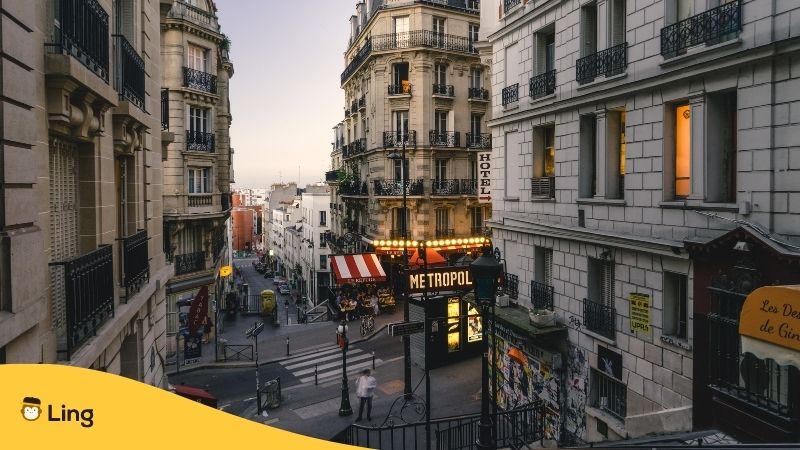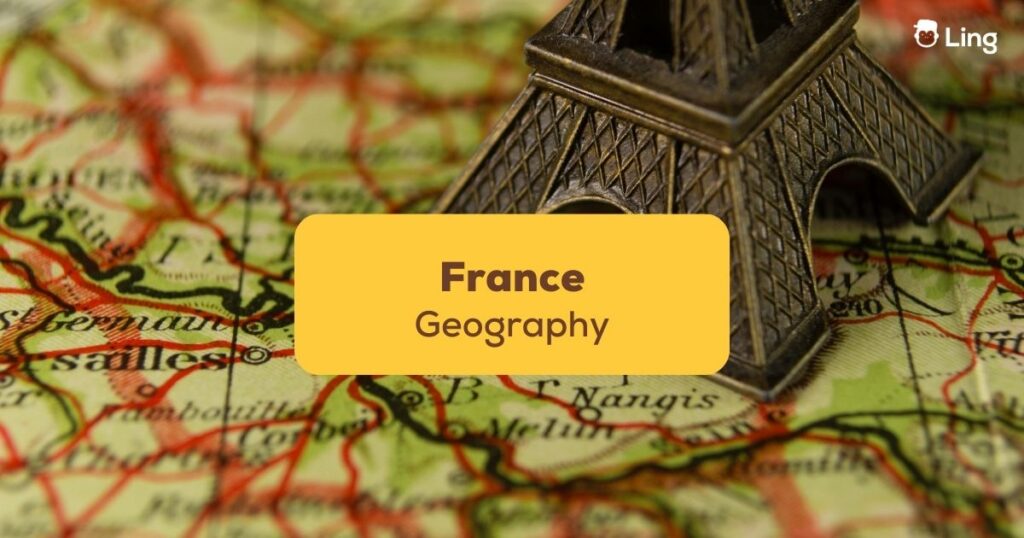France is a country in Western Europe that is known for its rich history and culture. However, one of the most important aspects of France geography or géographie is its location in Western Europe, bordering several countries and bodies of water. Want to get to know more about it? Let’s begin!
From the soaring peaks of the Alps to the sun-drenched beaches of the Côte d’Azur, the country holds the status of being one of the world’s oldest nations and is arguably Europe’s most ethnically diverse country. The country’s deep and broad influences mean it is a world leader in terms of culture. Just think about the incomparable beauty of the Louvre Museum, the breathtaking Eiffel Tower, and the magnificent Notre Dame. Wouldn’t anyone fall in love easily with this country?
France Geography
The French Republic is located in Western Europe and shares borders with Belgium, Luxembourg, Germany, Switzerland, Italy, Spain, and Andorra. The country is also bordered by the English Channel, or the North Sea, to the north, the Atlantic Ocean to the west, and the Mediterranean Sea to the south.
France is the largest country in the European Union and the second-largest in Europe after Russia. Its total land area is 643,801 square km (248,573 square miles), making it slightly smaller than the state of Texas in the United States. By population, the largest regions of France are Ile-de-France, which is the largest and includes the Paris population, the Rhone-Alps, and then the Province-Alpes-Cote d’Azur.
Outside of Metropolitan France are the French overseas territories. Overseas regions belonging to France include the five overseas regions of Reunion, Mayotte, Martinique, Guadeloupe, and French Guiana.

Topography
France has a varied topography that ranges from high mountain ranges to low-lying coastal plains. There are numerous national or regional parklands that cover around 10 per cent of the country. The country can be divided into four main regions: the French Alps, the French Pyrenees, the Massif Central, and the coastal plains.
French Alps
The French Alps are a mountain range that stretches from the Mediterranean Sea to the Swiss border. The highest peak in France, Mont Blanc, is located in this region and stands at an elevation of 4,810 meters (15,781 feet). The French Alps are also home to several ski resorts and attract millions of visitors every year.
French Pyrenees
The French Pyrenees mountains are another mountain range that forms a natural border between France and Spain. The highest peak in the Pyrenees, Pic de Aneto, stands at an elevation of 3,404 meters (11,168 feet). The Pyrenees are a popular destination for hiking and skiing.
Massif Central
The Massif Central is a highland region that covers approximately one-sixth of France. It is located in the central part of the country and is characterized by rolling hills, plateaus, and volcanic peaks. The Massif Central major rivers include the Rhone, Rhine, and Seine. The highest peak in Massif Central, Puy de Sancy, stands at an elevation of 1,886 meters (6,188 feet).
Coastal Plains
The coastal plains of France are located along the Atlantic coast and the Mediterranean coast. They are low-lying areas that are characterized by sandy beaches, wetlands, and lagoons. The coast of France is approximately 3,427 km (2,130 miles) long and is home to several popular beach resorts.
Rivers And Lakes
France is home to several major rivers, including the Seine, the Loire, the Garonne, and the Rhône. The Seine is the most famous of these rivers and flows through the heart of Paris. The Loire is the longest river in France and is known for its beautiful châteaux and vineyards. The Garonne and the Rhône are important rivers for transportation and commerce.
France is also home to several large lakes, including Lake Geneva, Lake Bourget, and Lake Annecy. Lake Geneva is the largest lake in Western Europe and is shared by France and Switzerland. It is a popular destination for water sports and is surrounded by beautiful mountains.

Climate
France has a temperate climate that is influenced by its proximity to the Atlantic Ocean and the Mediterranean Sea. The weather in France can vary widely depending on the region, with the north of the country experiencing cool, wet, mild winters and mild summers, while the south of the country enjoys warm, sunny weather throughout the year.
When To Visit
Although there is never a bad time to visit this amazing country, late spring and early Autumn are the best times to visit France if you want to avoid the crowds. The weather is still glorious enough for you to enjoy getting out and about, and there are fewer people crowding the popular tourist destinations.
July and August are when the Europeans take their holidays, and the beach resorts can get rammed. Many businesses in France close their doors in August, but this shouldn’t impact the tourist. The winter months are an excellent time to visit the major cities and enjoy seeing France through the eyes of a local, but be aware that rural areas and villages outside of the ski resorts can be very quiet.
French Geography Vocab
Ready to impress the locals? Be sure to use the following words in your next interaction!
| English | French | Sound |
| Beach | CoastPlage | |
| Coast | Côte | |
| Forest | Forêt | |
| Geography | Géographie | |
| Hill | Colline | |
| Island | Île | |
| Lake | Lac | |
| Mountain | Montagne | |
| Ocean | Océan | |
| River | Rivière | |
| Sea | Mer | |
| Waterfall | Chute d’eau/Cascade | / |
Navigate France’s Geography More Easily With Ling
Learning France geography words and phrases is simple to do with the Ling app. The Ling app has mountains (no pun intended) of useful French vocab in easy-to-navigate lessons that are made fun and easy with quizzes and games. With more than 60 languages to choose from, the Ling app is definitely your one-stop language tool. Download the Ling app today at Google Play and App Store to start learning French the right way!
































